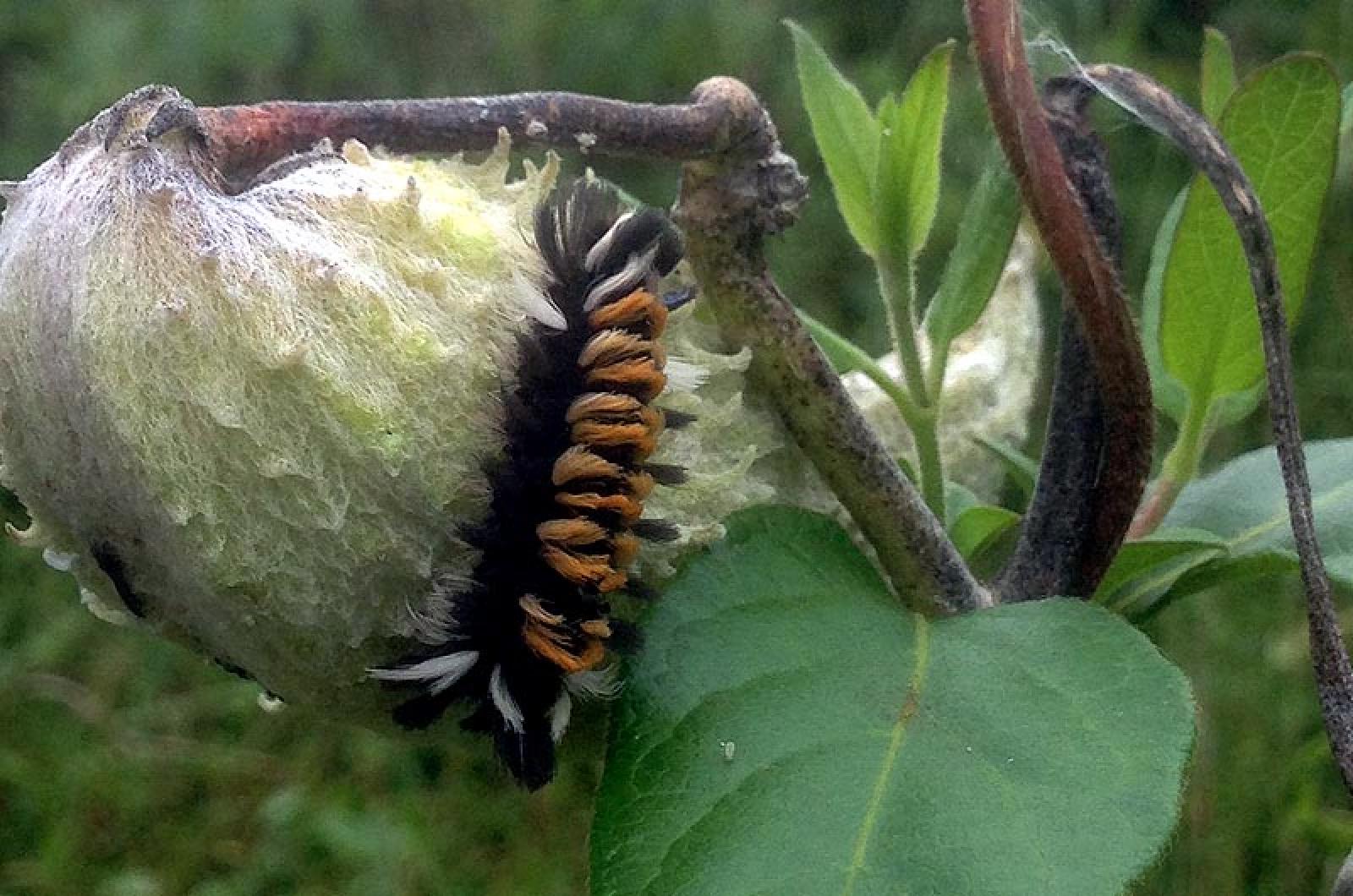Life often isn’t fair.
Just ask the moth, a creature that seems to always play second fiddle to the butterfly. In his book The Silence of the Lambs, Thomas Harris acknowledges, “Most people love butterflies and hate moths, but moths are more interesting — more engaging.”
Moths may seem to have gotten the short end of the stick on fame and beauty, but a closer look at the caterpillar stage of one moth reveals a different story.
The milkweed tiger moth is just one exception to the myth of the uninteresting moth. A nondescript gray-winged moth, only its yellow body with black dots gives it any oomph. However, as a caterpillar, all bets on boring are off!
Seen now on a milkweed plant near you, the caterpillar of the milkweed tiger moth is anything but dull. Think Cousin Itt meets Halloween.
This caterpillar is very hairy, with uneven tufts of black and white shooting out from both ends of this beast. Its mostly orange-yellow body provides the colors that are reminiscent of candy corn.
And you usually won’t just see one! Milkweed tiger moth caterpillars are known for their colonial consuming. Together they munch through milkweed like a kid just returning from trick-or-treating. It is not unusual to see 20 or more of these caterpillars skeletonizing a milkweed leaf.
They will avoid eating the plant’s veins, since those have a strong toxin that can be fatal. Eating the leaves provides just enough of this poison to make the caterpillars themselves toxic, providing protection from predators.
This caterpillar’s bright colors, hairy body, and toxic taste will dissuade their daytime predators, but nighttime is another story. Bats are the biggest threat to these caterpillars once the moon comes up and the lights go down.
Milkweed tiger moth caterpillars have them beat, too. A unique adaptation bests those bats. These caterpillars have a sound organ called a tymbal that allows them to emit clicking sounds that warn off the hungry bats. Score one for the caterpillar, zero for the hungry bat!
It is, however, a draw when it comes to competition with another milkweed lover. Most folks know that monarch caterpillars are also milkweed munchers. In fact, monarchs can only eat milkweed, while milkweed tiger caterpillars can also consume other plants.
Does that give them an unfair advantage over the monarchs, who are already having a hard time and whose numbers are at an all-time low? Absolutely not. Both caterpillars can coexist and even eat the same milkweed plants without impacting each other. Monarch caterpillars prefer the young leaves of the milkweed plant, while tiger moth caterpillars consume the more mature leaves of the plant.
It is one of Mother Nature’s more perfect partnerships. Neither species of caterpillar seems to mind that one will emerge into a well-beloved butterfly and the other into a hardly noticed moth. For that moment on the milkweed, both are equal and life is, for once, fair.
Suzan Bellincampi is director of the Felix Neck Wildlife Sanctuary in Edgartown, and author of Martha’s Vineyard: A Field Guide to Island Nature.





Comments
Comment policy »